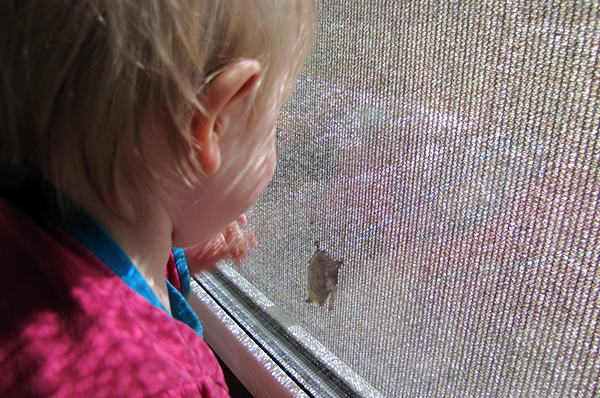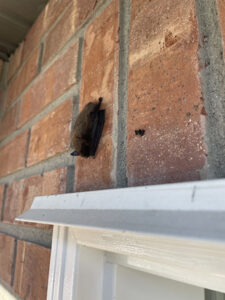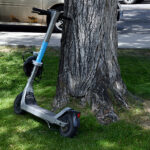Home »

Mosquitoes beware: bats have your number
Did you know that a Little Brown Myotis can eat 600 mosquitoes in an hour?
Not only do bats devour mosquitoes, but the bats of B.C. also eat other night-time insects that are considered pests to the agricultural and forest industries.
“Smaller bat species eat the smaller insects, while larger bat species eat larger beetles and moths, including cucumber beetles, June bugs, stinkbugs, and Spruce Budworm,” said Elodie Kuhnert, Kootenay Community Bat Program coordinator. “We have at least 15 species of bats in B.C. and they all provide free and natural insect pest control services for the community.”
The BC Community Bat Programs would like to remind residents that in August, bats start to leave their summer roosts and sometimes end up in unusual spots, like entryways, on exposed walls, on the ground, in covered deck areas, or even flying into a house if the door is left open in the evening. Please remember to never touch a bat with bare hands, whether it’s dead or alive.

Bats are important wildlife that are protected under the BC Wildlife Act. It is illegal to exterminate, directly harm, or harass bats.
Bats don’t breed like mice. “Females only have one pup per year,” said Kuhnert. “Pups are born in June, learn to fly and start hunting for bugs in July, and start to leave their maternity colonies in August and September.”
Bats have to fatten up enough to survive all winter without eating. About half of the pups don’t make it through their first winter.
“Young bats like to stay up all night and don’t necessarily come home!” stated Kuhnert. “Sometimes bats end up sleeping in exposed spots during the day.”
Bats should be left alone if they are roosting in areas safely away from pets or children. Bats will fly off in the evening to continue foraging for insects. “Let the bat hang out for the day,” said Kuhnert.
If you must move a bat, wear thick gloves and long sleeves, and use a small trowel, box or cotton cloth bag to gently capture and relocate a bat to a tree nearby. Release the bat at head-height or higher, on a tree where pets and curious children won’t disturb it.
Fewer than one per cent of bats in B.C. are known to carry rabies; however, this is why it is important to avoid any contact.
“Talk to your children to make sure they understand to never touch, play or try to rescue bats.” says Kuhnert. If you suspect a bite or scratch from a bat: 1. Immediately wash the area with soap and water for 15 minutes; and 2. Contact your public health or your doctor immediately.
For more information on rabies please refer to the BCCDC website.
Cats can hear bat echolocation calls at night, and often successfully hunt them. If your cat comes into contact with a bat, please call your veterinarian immediately to see if rabies boosters are needed. Always vaccinate your pets against rabies.
The BC Community Bat Program recommends that cats be kept indoors in the evening when the bats are active. “Bat pups are learning to fly at this time of year and they are easily caught and killed by cats,” said Kuhnert.
If you have bats roosting on your buildings, the BC Community Bat Programs can offer information, provide best management practices, and support. For information on safely moving a bat and to report bat sightings, landowners can visit the BC Community Bat Program’s website (www.bcbats.ca), email YOUR EMAIL, or call 1-855-9BC-BATS ext.14.
The BC Community Bat Programs are supported by the Habitat Conservation Trust Foundation, Forest Enhancement Society of BC, the Habitat Stewardship Program, the Government of B.C. and many regional partners, including the RDCK local fund and the Columbia Valley local fund.
Lead image: It’s important to teach children to appreciate bats, but also to teach them to never touch a bat. Contact the BC Community Bat Program for information on how to move a bat safely. Photo by Lesah Curatolo
Submitted







